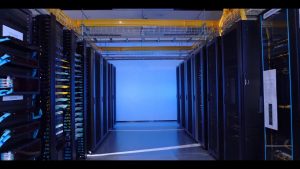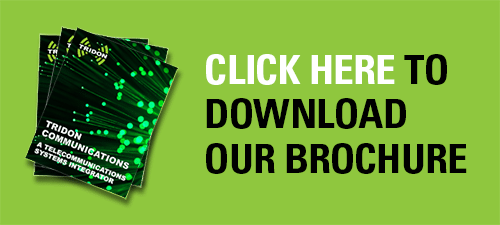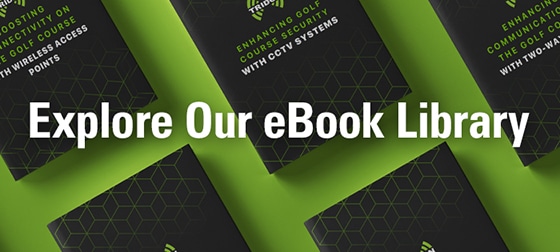Your facility’s data cabling infrastructure will largely dictate how effectively your operation shares information between devices. In all likelihood, your layout will include a combination of cabling types. But, knowing the benefits, drawbacks, and capabilities of each type of cable will give you a good sense of what combination of cables will give you the best balance of performance and price.
The Basics
There are a few key points to touch on first. Ethernet cables are a form of copper cabling often used in the construction of local area networks (LANs). Data is transmitted through the cabling via electrical signals. Earlier generations of cabling (cat 3 to Cat5e) offer speeds ranging as low as 10 MB/s all the way up to 1000 MB/s. Newer generations of cabling (like Cat 7 and Cat 8) can reach data transmission speeds ranging from 10 GB/s to 40 GB/s.
It should be noted that, regardless of the generation, the consistency of these data transmission speeds will depend on the length of the cables being used. After a certain length, the rate of data transfer slows down. The optimal length varies from category to category.
With that out of the way, let’s talk about some different cable categories.
Category 5
Cat5 are twisted pair cables built to support computer networks. They can also be found in landline telephone systems and are capable of top speeds of 100 MB/s over cable runs up to 100 metres. While Cat5 cables may still have a presence in older computer networks, Cat5e (Category 5 Enhanced) cables replaced them in the early 2000s.
Category 5 Enhanced
At a glance, Cat5 and Cat5e cables appear virtually identical, but there are notable differences. First off, a length of Cat5e cable has two pairs of copper wire (four wires in total) as opposed to one pair of copper wires in Cat5 cables. This translates to a higher rate of data transfer, as fast as 1GB/s. In addition, Cat5e cables have a greater degree of shielding than Cat5, resulting in less crosstalk (or signal interference) from nearby devices. While this speed is still limited to cable runs of 100 metres or less, the end result is still a better user experience when compared to Cat5 cable.
Category 6
Cat6 cabling is a more expensive option than previous generations and with good reason. It can offer speeds of up to 10 GB/s over a cable run of 100 metres (55 metres in certain, more demanding environments). It is also backward compatible with Categories 3, 5, and 5e cables, making it an option for organizations looking to upgrade their existing cabling layout in phases. Installation of Cat6 cabling can be complicated though, and certain applications require the use of a special adapter.
When it comes to applications, Category 6 cables are often used to support Wi-Fi data points. They are also frequently used to supported Distributed Antenna Systems (DAS), which in turn support the signal strength of RF devices being used in problematic areas.
Category 6, Enhanced and Augmented
If your facility is a ‘high noise environment’ (one with a great deal of potential signal interference), then Cat6e cabling may be worth considering. Like Cat5e, Cat6e cable has a greater degree of shielding than its predecessor and is less prone to interference.
However, Category 6 Augmented (Cat6a) offers the same level of shielding as cat6e with a greater degree of futureproofing. It operates at a higher frequency than previous generations of cable, making it a superior option if your organization plans on having considerable A/V needs, like the operation of a large-scale CCTV system.
Category 7
Cat7 cables are robust. They are heavily shielded against crosstalk and can offer maximum speeds of 10 GB/s (up to 100 meters). 40 GB/s (up to 40 meters) and 100 GB/s (up to 15 meters). However, specialized connectors are required to take full advantage of these speeds. Furthermore, the design of the cable makes it less flexible than earlier generations of cable. This could present some limitations on how and where you install it.
As it stands, both Cat7 and Cat8 (see below) are used primarily in data centers.
Category 8
Cat8 cabling is fairly new. It has been tested to operate at a significantly higher frequency than previous generations (2 GHz) making it well-suited to complex data needs. Like Cat 7 it is also well-shielded against crosstalk. One slight drawback of Cat8 cabling, other than a higher price point, is the fact that its top speed of 25 GB/s is over a considerably shorter maximum distance of 30 meters.
Getting Started
There are a great many factors you’ll have to take into account when choosing your combination of cabling. Your budget is one, certainly. But you’ll have to consider the number of devices that will be on the network, the type of devices, and the number of people on your team.
Just as important is the performance you’ll need from your cabling infrastructure to keep your business thriving. While faster may be better in general, there reaches a point where certain speeds are simply surplus to any requirement your business could face. At this point, you’re spending money you don’t have to.
Getting the right structured cabling installation comes down to planning and expert implementation. If you’re ready to start designing your cabling layout, or if you want help upgrading it, Contact Us. Our Telecommunications Engineers and Cabling Technicians are here to help.
Tridon is a full solution Telecom Systems Integrator with CSA certification and licensed by APEGA. Our Engineering, Service and Tower Divisions collaborate with customers to build engineered solutions including communications systems design, tower inspections, and co-location, wireless broadband, fiber optic cabling, site security, and two-way radio communication.




